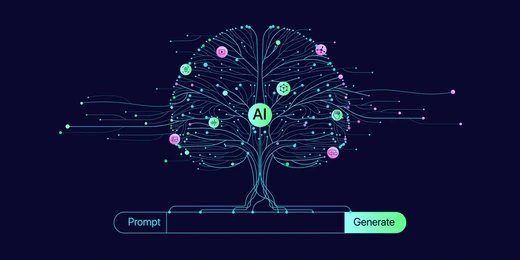
Becoming a Data Scientist
In the digital era, data has evolved into the new oil, and data scientists are the skilled professionals who have the prowess to refine it into valuable insights. Data scientist play a pivotal role in various industries, from tech giants to healthcare, finance, marketing, and beyond. As the demand for data-driven decision-making continues to grow, so does the pressing need for talented and passionate data scientists. If you find yourself yearning to embark on this thrilling journey, let me take your hand and guide you through the essential steps toward a successful career in data science.

1. Lay a Strong Foundation
A solid educational background forms the bedrock for any aspiring data scientist. Most data scientists have at least a bachelor’s degree in fields like computer science, mathematics, statistics, engineering, or a related domain. This educational journey equips you with a rich array of skills in mathematics, programming, and problem-solving, which are the very building blocks of data science.
2. Master Programming and Tools
Proficiency in programming languages is not just a box to tick, but a key to unlocking the wonders of data science. Python and R are the most sought-after languages in the data science community, not only for their versatility but also for their abundance of libraries. Embrace these languages and dive deep into practicing the art of implementing algorithms and data manipulation techniques.
Moreover, you’ll need to acquaint yourself with popular data science libraries such as Pandas, NumPy, SciPy, Scikit-learn (for machine learning), Matplotlib, and Seaborn (for data visualization). On top of that, learning SQL for database querying and management will serve as a trusty companion in your data science adventures.
3. Grasp Statistical Concepts
Statistics is the guiding compass in the vast ocean of data science, steering you towards making sense of data and drawing meaningful conclusions. Understanding concepts like probability, hypothesis testing, regression, and statistical distributions empowers you to conduct robust data analysis. With this mighty knowledge, you will be well-equipped to fashion powerful machine-learning models and shape data-driven decision-making.
4. Dive into Machine Learning
Machine Learning (ML) is not just an abstract concept; it’s the heart and soul of data science. Begin your journey by acquainting yourself with the basics of supervised and unsupervised learning, then venture forth into the realm of more advanced techniques like reinforcement learning and natural language processing (NLP). Embrace the thrill of building ML models and understanding the trade-offs between various algorithms.
5. Data Preprocessing and Cleaning
In the real world, data seldom comes gift-wrapped and ready for analysis. Here, you’ll discover the art of data preprocessing and cleaning, where you’ll spend valuable time tidying and refining data to ensure it’s in a pristine format for analysis. Learn techniques to handle missing data, outliers, and data normalization, for this will enhance the accuracy and reliability of your models, making them robust in the face of real-world complexities.
6. Data Visualization
Data visualization is not merely a cosmetic touch; it’s a language that speaks volumes about your data. Master the art of creating captivating and informative visualizations using libraries like Matplotlib, Seaborn, and Tableau. Visualizations not only help you understand the data better but also serve as the most eloquent medium to communicate your findings to non-technical stakeholders, painting a vivid picture of your discoveries.
7. Work on Real-world Projects
Practice, practice, practice – the eternal mantra of progress. Engage your heart and soul in data science projects that ignite your passion or align with your career dreams. Platforms like Kaggle and GitHub are a treasure trove of inspiration and opportunity. By working on real-world problems, you’ll gain the cherished gift of hands-on experience and learn to wield your knowledge to solve practical challenges.
8. Stay Updated with the Field
The realm of data science is ever-changing, akin to a chameleon adapting to its surroundings. Stay vigilant and updated with the latest trends, technologies, and research in data science and AI. Follow influential data scientists and industry leaders on their journeys, participate in vibrant online communities, attend exhilarating conferences, and delve into the illuminating world of research papers. This continuous learning will keep the flames of your passion burning bright and inspire you to scale new heights.
9. Build a Strong Portfolio
A portfolio is not just a compilation of achievements; it’s the living embodiment of your data science prowess. Curate and showcase your completed data science projects, code repositories, and any other relevant contributions to open-source projects. A well-organized portfolio doesn’t just impress; it shines a light on your abilities and mirrors your unwavering passion for data science.
10. Networking and Collaboration
In this journey of growth, remember that you don’t walk alone. Network and forge connections with fellow data scientists and professionals through the wonder of social media platforms like LinkedIn. Partake in data science meetups or conferences, where the magic of camaraderie unfolds, and immerse yourself in the boundless knowledge of online forums and communities dedicated to data science. Collaboration is not just a buzzword; it’s the bridge that leads to new opportunities, diverse perspectives, and a symphony of ideas.
11. Continuous Learning
Data science is a journey, a never-ending expedition into the realms of discovery and innovation. Seek to learn, and you shall find the treasures of knowledge. Continuously upgrade your skills and knowledge, delving into advanced topics like deep learning, big data technologies (e.g., Hadoop, Spark), and the wonders of cloud computing. In your quest, don’t forget to embrace the beauty of domain-specific knowledge, for data science’s transformative touch knows no bounds and spans across countless industries.
Conclusion
Becoming a data scientist is an enchanting adventure, filled with the thrill of exploration and the magic of unlocking insights hidden within data’s depths. As you embark on this journey, remember to lay a strong foundation, grasp the art of programming, statistics, and machine learning, and revel in the joy of working on real-world projects. Stay attuned to the ever-changing landscape of data science, and build your portfolio with pride. But above all, cherish the connections you forge, for data science’s true magic lies in the heart of collaboration. With continuous learning as your compass, set sail into the boundless seas of data science, and let the power of data guide you towards a rewarding and fulfilling career.













